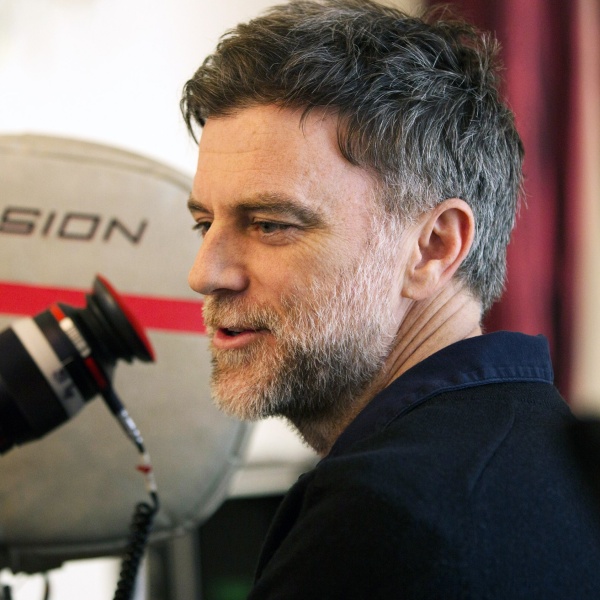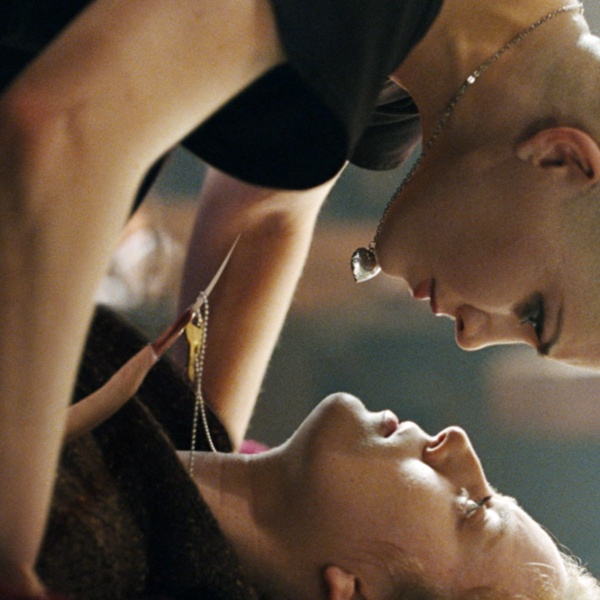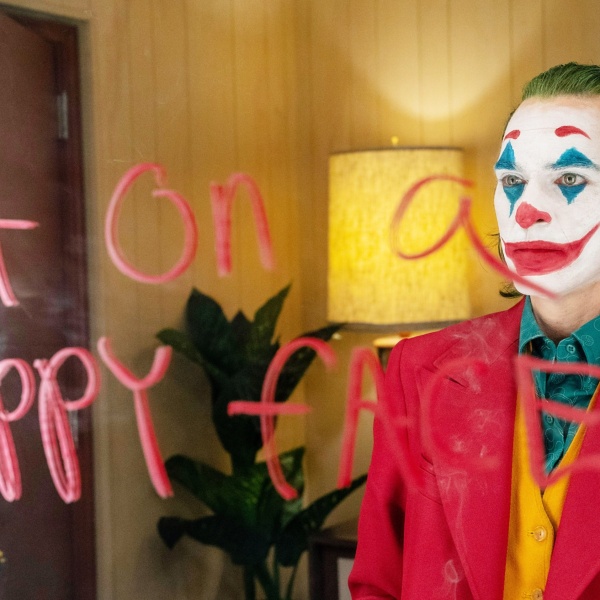Oscar VFX contenders “The Creator” and “Spider-Man: Across the Spider-Verse” got the biggest boosts from the Visual Effect Society nominations. Both received seven nods from the VES (including best prize for photoreal and animated feature, respectively). The 22nd VES Awards will take place February 21 at the Beverly Hilton Hotel.
Gareth Edwards’ “The Creator” also received noms for virtual cinematography, modeling, created environments, simulated effects, and two for lighting and composition. “Across the Spider-Verse” received additional noms for modeling, character animation, created environments, virtual cinematography, lighting and composition, and simulated effects.
The other best photoreal nominees include the Oscar-shortlisted “Guardians of the Galaxy Vol. 3″ and “Indiana Jones and the Dial of Destiny,” along with the Oscar-snubbed “Oppenheimer” and the surprising “Dungeons & Dragons: Honor Among Thieves.” “Godzilla Minus One,” which is gaining momentum as the Oscar sleeper, was only entered in the animated character category, which it was nominated for.
The best supporting VFX nominees include the Oscar-shortlisted “Napoleon” and “Society of the Snow,” as well as “John Wick: Chapter 4,” “Killers of the Flower Moon,” and “Nyad.”
The other best animated feature nominees include “Chicken Run: Dawn of the Nugget,” “Elemental,” “Nimona,” and “Teenage Mutant Ninja Turtles: Mutant Mayhem.”
Meanwhile, the VFX Oscar bakeoff took place January 13 at the Academy Museum, with “Godzilla Minus One” stealing the show and getting the biggest applause from branch members in attendance. Director and VFX supervisor Takashi Yamazaki was very effective and self-effacing in emphasizing his underdog role in going up against the studio Goliaths. With a team of only 35 artists, they completed 610 shots (the film’s total budget was reportedly $15 million). Yamazaki brought his secret weapon, young compositor Tatsuji Nojima, who also took on the challenging water simulation after impressively dabbling with Houdini in his spare time.
The other standouts were “The Creator,” “Across the Spider-Verse,” “Guardians of the Galaxy Vol. 3,” “Dead Reckoning,” and “Society of the Snow.” “Across the Spider-Verse,” which also received enthusiastic applause, has the biggest hurdle because there has never been a stylized CG-animated feature previously nominated for VFX. That’s because there are members who don’t believe that animation passes the category’s threshold of integrating live-action with photoreal VFX and SFX.
The only breakthrough has been Jon Favreau’s photoreal CG version of “The Lion King” (which was touted as “live action”). However, the “Spider-Verse” VFX team made a passionate argument that their innovative tech and wild comic book stylization take the craft to new artistic heights. In addition, producer Phil Lord told IndieWire that he believes they pass the integration threshold with the compositing of 2D and even some live-action elements.
Here’s a rundown of the competition:
AI sci-fi thriller “The Creator” (20th Century/Disney), is the favorite for its game-changing, streamlined process. Director Edwards made an $80 million indie film look like a $200 million blockbuster by shooting the entire film first in 80 locations in Southeast Asia with the lightweight Sony FX3 pro-use camera, and then having ILM design and place the naturalistic VFX in post over the actors playing simulants (without resorting to mocap) and the photographic plate elements.
For “Across the Spider-Verse” (Sony Pictures), Imageworks introduced several new dimensions (including Gwen’s watercolor-inspired Earth-65 and Mumbattan) and characters (including the black-and-white Spot), which required new tools for simulation, linework, brushstrokes, and non-photorealistic compositing. This enabled them to translate more elaborate 2D stylization into 3D.
“Godzilla Minus One” (Toho) is a refreshingly strong entry in Toho’s beloved kaiju franchise, and Yamazaki smartly did a period piece about post-war Japan forced to fight this nuclear bomb-like monster with science rather than advanced weaponry. With limited practical elements, everything was CG (using commercial software Maya, Houdini, and Nuke), including Godzilla, which was designed to be very fierce with lots of spikes and eyes that never blink. And, of course, the simulated water plays an important element in the climactic battle.
James Gunn’s “Guardians” (Marvel/Disney) finale became a touching Rocket story (including his painful origin as a cruel lab experiment), and Framestore was integral in pulling off the animation with complicated fur interaction. In addition, Framestore made use of an expanded Groot design to make him a stronger and more powerful character. Wētā FX returned as well to principally create the colossal, ruby-covered spaceship, the Arête, and an entire city surrounding the Arête that was loosely based on Seattle.
For Christopher McQuarrie’s “Dead Reckoning Part One” (Paramount) there were several impressive action set pieces by ILM, especially the climactic Orient Express train wreck. The shots of the locomotive plummeting from the high, exploding bridge were a combination of techniques. The locomotive itself was a real, full-scale locomotive falling from the edge of a quarry shot in the UK. The FX team split the full digital bridge into the individual bricks and ballast that would be used in the construction of an actual bridge of that period and design, and used that as the basis for full rigid body destruction simulations. Dust, smoke and water simulations were used to enhance the atmospherics and water splashes that were in the photography.
The de-aging of Harrison Ford in “Indiana Jones and the Dial of Destiny” (Lucasfilm/Disney) was an impressive tech breakthrough by ILM that’s a strong contender despite the film’s disastrous box office performance. What’s more, the “ILM FaceSwap” utilized every tool in their VFX arsenal and was achieved with the help of more than 100 artists. This was no AI-dependent solution (though machine learning compiled and analyzed the hundreds of hours of footage of Ford from the first three “Indiana Jones” movies). The key was the actor’s on-set performance and his agility, coupled with the successful implementation of the light-based capture system called FLUX and the shot-specific remedy to complete the work, including lots of keyframe animation.
J.A. Bayona’s “Society of the Snow” (Netflix), the true-life survival thriller about the 1972 plane crash in the Andes with the Uruguayan rugby team, was enhanced by photo-realistic VFX. To recreate the Valley of the Tears, a special mountain photography unit shot background plates and photogrammetry. This footage was displayed in a complex mobile LED screen system built in a parking lot of the main set: a ski resort in Spain’s Sierra Nevada, where they shot replicas of the plane’s fuselage on gimbals or platforms for interior and exterior shooting.
As for the rest: Ridley Scott’s “Napoleon” (Apple TV+ Columbia Pictures) made the list for its battle sequences (MPC and ILM), shot mostly with practical, in-camera effects, the highlight of which was Austerlitz, where horses fall through the ice. Yorgos Lanthimos’ “Poor Things” (Searchlight Pictures), a wild, Victorian-era “Frankenstein” gender-bender, touts plenty of old and new school VFX (from Union VFX), including miniatures, painted backdrops, composited hybrid animal breeds, and LED screens for cruise ship sea and sky environments. “Rebel Moon,” Zack Snyder’s sci-fi space opera about a colony on the edge of a galaxy at war with a tyrannical ruling force, began as a “Star Wars” pitch with future-retro nods to “Seven Samurai” and “Heavy Metal” magazine. The CG characters include a hybrid human/spider creature and a mechanical knight (voiced by Anthony Hopkins). The VFX is from half a dozen companies, led by Framestore, Wētā, and Scanline.
Potential nominees are listed in alphabetical order; no film will be deemed a frontrunner until we have seen it.
Frontrunners
“The Creator”
“Godzilla Minus One”
“Guardians of the Galaxy Vol. 3”
“Society of the Snow”
“Spider-Man: Across the Spider-Verse”
Contenders
“Indiana Jones and the Dial of Destiny”
“Mission: Impossible – Dead Reckoning Part One”
“Napoleon”
“Poor Things”
“Rebel Moon – Part One: A Child of Fire”






